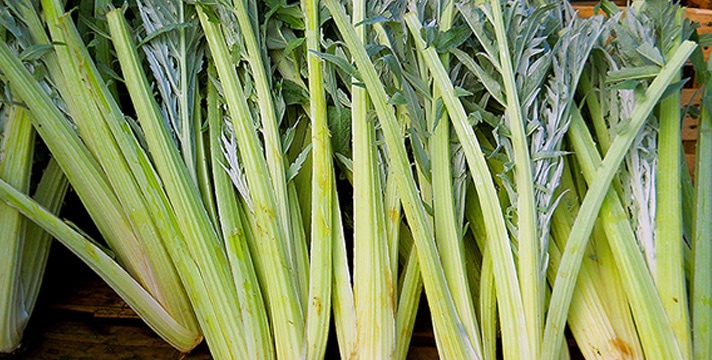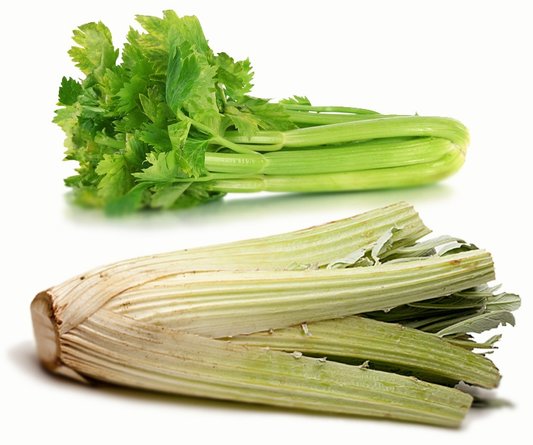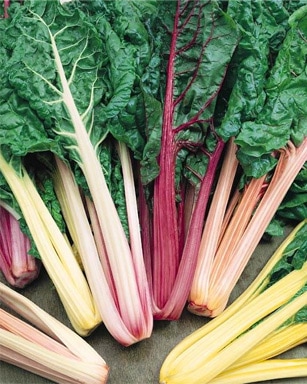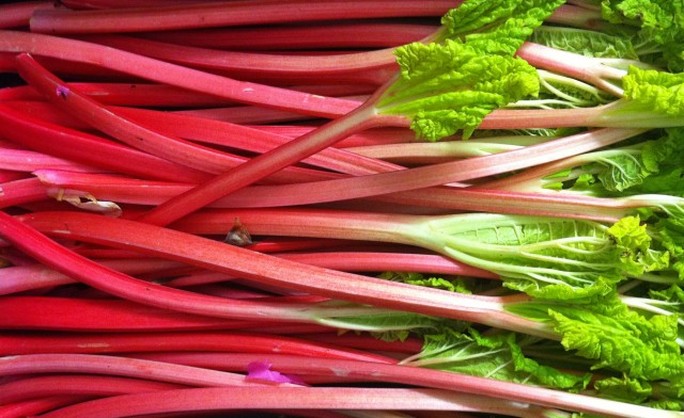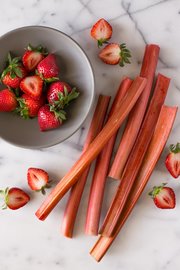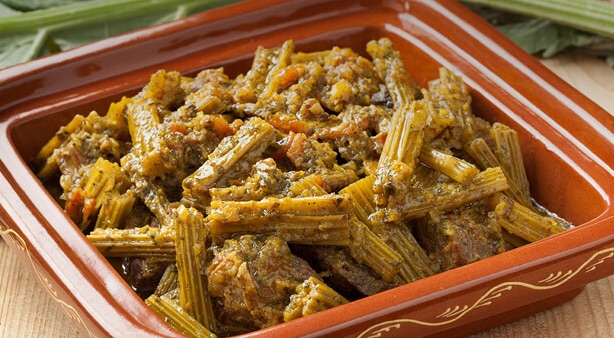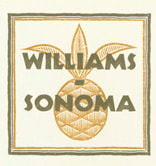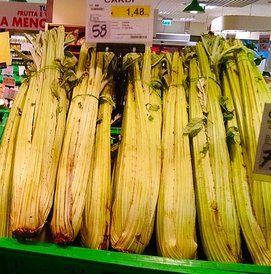 Cardi as we first discovered in in a Montepulciano market Cardi as we first discovered in in a Montepulciano market In the very first market we visited in Italy, we came upon a strange looking, rugged celery-looking vegetable: Cardi (Cardoon in English, in Italian it's Cardo, Cardone or Carduna). But Cardi is not celery and it is used in a very different ways. In talking to other Foodies in the States, I have found that many confuse Cardoon with Swiss Chard, or worse, with Rhubarb (which, because of its sweetness is used more like a fruit, as in pies). I thought I would explain the differences between this confusing batch of stalk veggies... 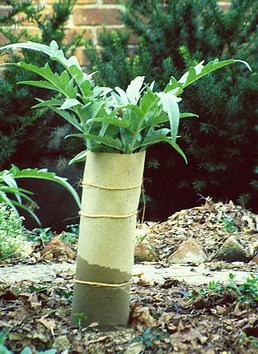 Blanching Cadri Blanching Cadri Cardoon is a member of the thistle family and a close cousin of artichoke, but unlike the artichoke, the stalks and not the flowers are eaten. In fact, it tastes like artichoke. If you like artichokes, you should enjoy Cardi. Cardoon grows in the field as a fairly dangerous, spiny plant, just like thistle. Unlike celery, its ribs are fibrous (and much more stringy) and need to be removed using a vegetable peeler. Along the sides of each stalk are fairly sharp barbs which also need to be peeled. Eaten raw, the stalks are nearly inedible--amazingly bitter, fibrous and tough. In general, there is no such thing as overcooking Cardi if you want to get them tender enough to eat--while getting rid of their dental-floss stringiness. In Italy, the average supermarket variety of Cardi on sale looks like a rough textured, perhaps dirty celery, with the tops trimmed off and bound by a twist tie, but in open air produce markets, you might find more choices. Often you will see a very tall (3-4'), straight variety with its thistle looking leaves intact. There is also another called Gobbi, a curved, hunchbacked type. Blanched Cardi are grown in darkness to produced a very pale color, in the same way white asparagus or white endives are grown by covering the maturing stalks. These are the more expensive and prized for culinary use because their taste is less bitter and they tend to cook faster. Their taste when well-cooked, as I mentioned earlier, is like artichoke, but with a smokey edge and hint of licorice, as with finocchio (bulbing fennel). If you ever decide to grow Cardoon in your garden, always remove the beautiful blue flower heads (they look like thistle flowers) to prevent the plant from dropping seeds or your garden will have hundreds of weedlings coming up next season. Swiss Chard (Bietola)
You can sauté Swiss Chard leaves and stems in a small amount of extra-virgin olive oil and season with freshly ground black pepper, minced garlic, and freshly grated Parmesan cheese. Eat as a side dish or as a baked potato topping. You can also cook the stems by first cutting in a small dice to soften them and adding to salsa, relish or chutney. Rhubarb (Rabarbaro) 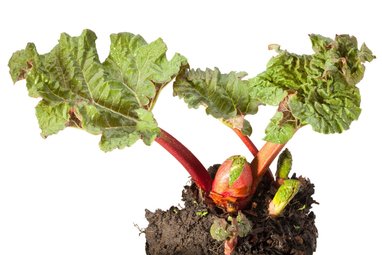 The main difference between Rhubarb and the other "stalk" veggies discussed here is that it does not grow in a head. The stalks grows from a woody rhizome individually and are harvested by cutting each close to the ground. Of course, the obvious difference is that, although a vegetable, Rhubarb is used in the same way we use sour cherries in pies. They are highly acidic and blend well with other sweet ingredients.
Sauteed Cardone Recipe Ingredients:
--Jerry Finzi
|
Archives
May 2024
Categories
All
|

